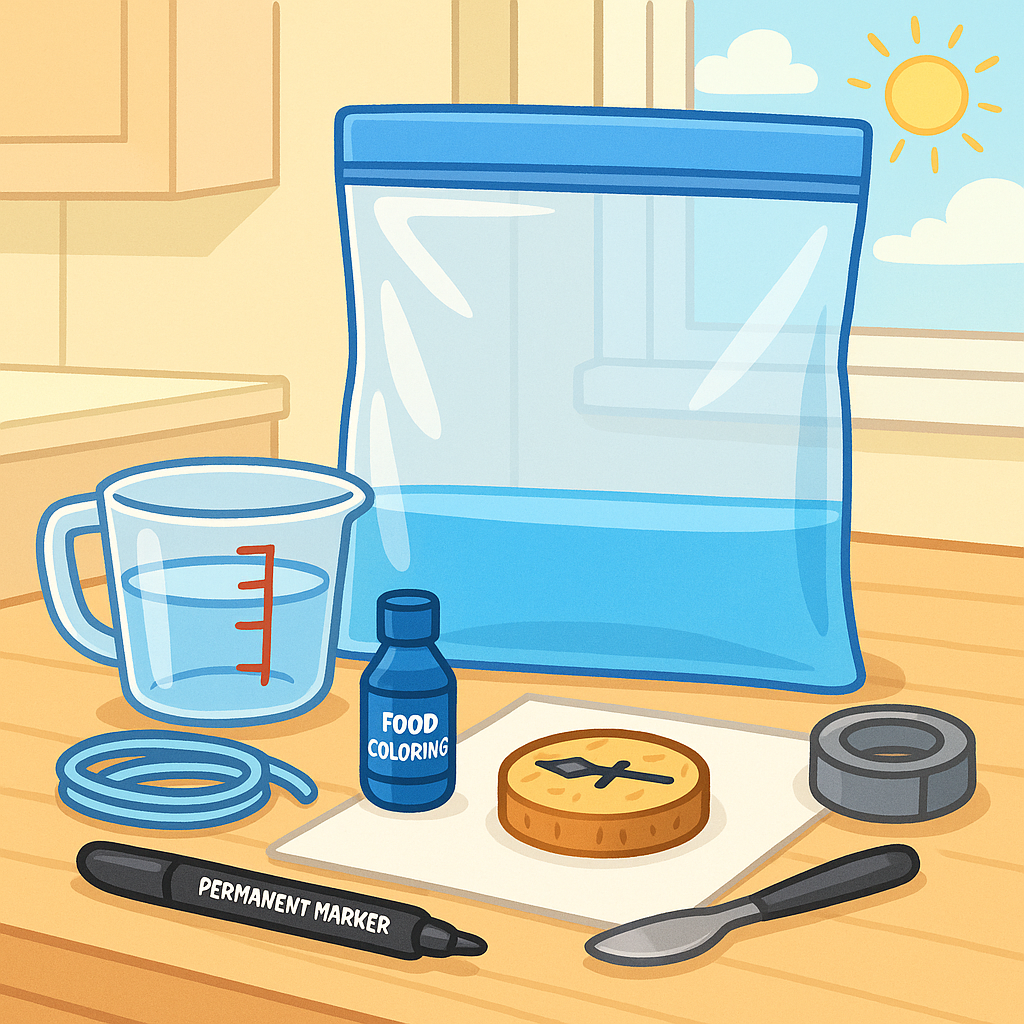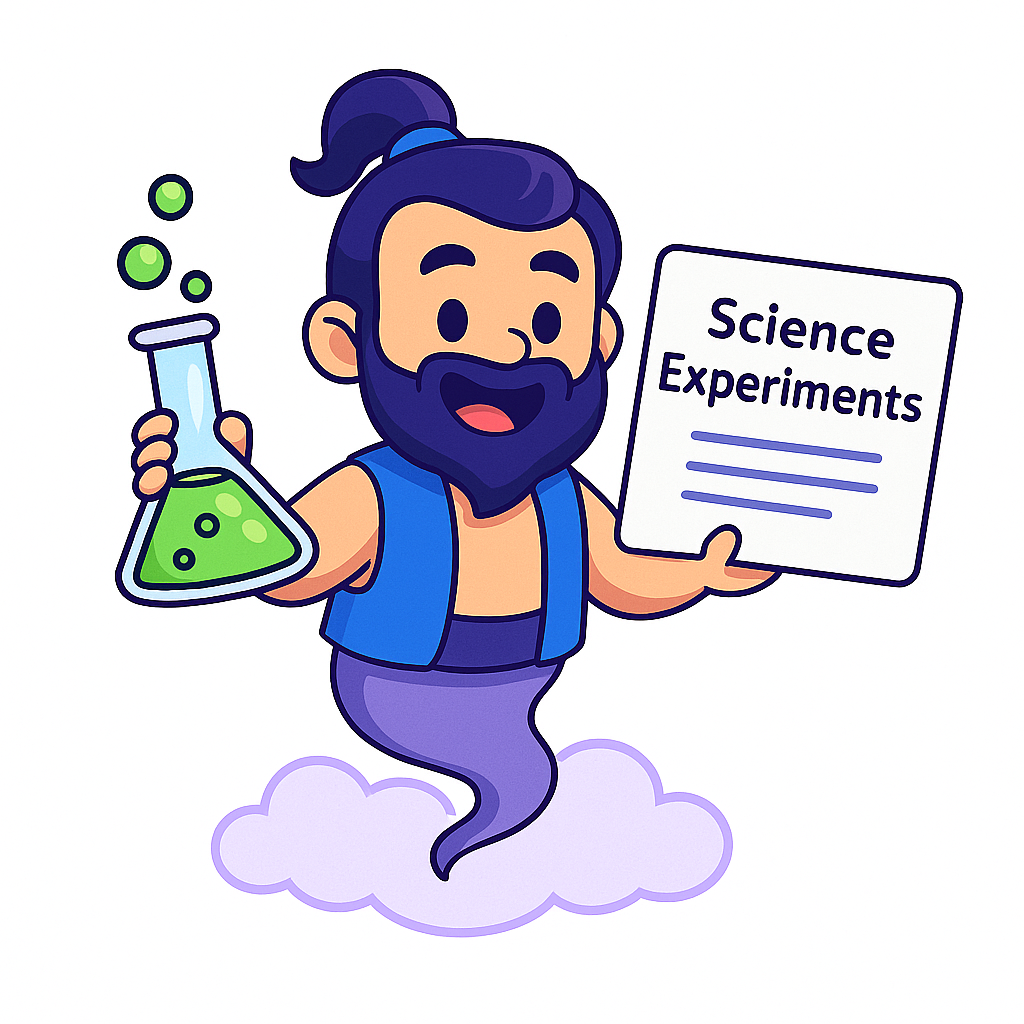 The Water Cycle in a Bag:
The Water Cycle in a Bag:
Model Evaporation, Condensation & Precipitation at Home
Model Evaporation, Condensation & Precipitation at Home
Bring the magic of Earth’s water cycle right into your kitchen window! This classic hands-on science experiment helps children visualize evaporation, condensation, and precipitation using a clear plastic bag and a bit of sunshine. Perfect for homeschoolers in grades 2–6, this lesson is simple to set up and offers real-world connections to weather, rain, and the water all around us. Parents, read on for detailed teaching tips, step-by-step instructions, and a free printable worksheet to reinforce learning.
Experiment Details
- Grade Level: 2nd–6th Grade (adaptable K–8)
- Key Topics: Water Cycle, Evaporation, Condensation, Precipitation
- Estimated Time: 10 min prep + 24 hours observation
- Mess Factor: None!
Purpose: To observe how water changes from liquid to vapor and back again, modeling Earth’s natural water cycle inside a bag.
Hypothesis: If I place water in a sealed bag and put it in the sun, then the water will evaporate, condense on the bag, and eventually form droplets that fall back down—just like rain!
What You’ll Need
- 1 clear plastic zip-top bag (gallon size recommended)
- 1/4 cup of water
- Blue food coloring (optional, makes water easier to see)
- Permanent marker
- Tape
- Sunny window or warm spot

Step-by-Step Instructions
- Carefully pour 1/4 cup of water into the plastic bag.
- Add 2 drops of blue food coloring to make the water easier to see (optional).
- Seal the bag tightly—no leaks!
- Use a permanent marker to draw a horizon line (land and sky) and label the bag with today’s date.
- Tape the bag to a sunny window or place it in a warm, sunlit spot.
- Observe the bag over several hours. Check for droplets forming on the inside.
- After 24 hours, look for water droplets “raining” down inside the bag. Record what you see.

Results & Scientific Explanation
As sunlight heats the water in the bag, some of the water evaporates and turns into invisible water vapor. The vapor rises and cools when it touches the inside surface of the bag, turning back into liquid water—this is condensation. As more droplets form and collect, they grow big enough to fall down the inside of the bag, simulating precipitation (rain). This cycle repeats, just like clouds, rain, and sunshine outside!
- Evaporation: Water absorbs heat energy and changes from liquid to vapor.
- Condensation: Water vapor cools and returns to liquid, forming droplets.
- Precipitation: Droplets combine and fall—your “rain” inside the bag.
Why Does This Matter?
The water cycle is essential for all life on Earth, bringing fresh water to plants, animals, and people. This simple model helps kids “see” the invisible process happening every day in the sky!
Learning Objectives
- Understand and name the stages of the water cycle.
- Observe water changing state from liquid to vapor and back again.
- Record scientific observations and describe changes over time.
- Connect the experiment to real-life weather, rain, and climate.
Teacher & Parent Tips
- Encourage children to draw what they see in the bag, labeling evaporation, condensation, and precipitation.
- Ask open-ended questions: What happens if you put the bag in the shade? Why do we use a sunny window?
- Compare the bag to clouds outside on a rainy day, and discuss how the sun drives the water cycle on Earth.
- Repeat the experiment with different amounts of water or colored water to see if it changes the results.
Standards Alignment
NGSS 5-ESS2-1: Develop a model to describe ways the geosphere, biosphere, hydrosphere, and/or atmosphere interact.
NGSS 3-ESS2-1: Represent data in tables and graphical displays to describe typical weather conditions expected during a particular season.
Printable Worksheet
Want a ready-to-use printable version for your homeschool science notebook?

Frequently Asked Questions
Sunlight provides the energy needed for evaporation. Without a warm spot, the process will be much slower or may not work at all.
Be patient—sometimes condensation takes a few hours. Try using a sunny window, or add a bit more water to see if it speeds things up.
Any clear, sealable bag works as long as you can tape it to a window and observe the process. Gallon-size bags show the cycle most clearly.
Yes—there are no chemicals or hot surfaces. Adult help is needed for measuring, sealing, and taping the bag.
Related Experiments
- Color Changing Cabbage Juice
- Lava Lamp in a Bottle
- Simple Circuit with a Battery and Bulb
- See All Science Experiments & Generator
Share Your Results!
Did you try this experiment? Share your photos, results, or questions below!
⭐ What Parents & Teachers Are Saying
Recent Feedback
There are no reviews yet. Be the first one to write one.
